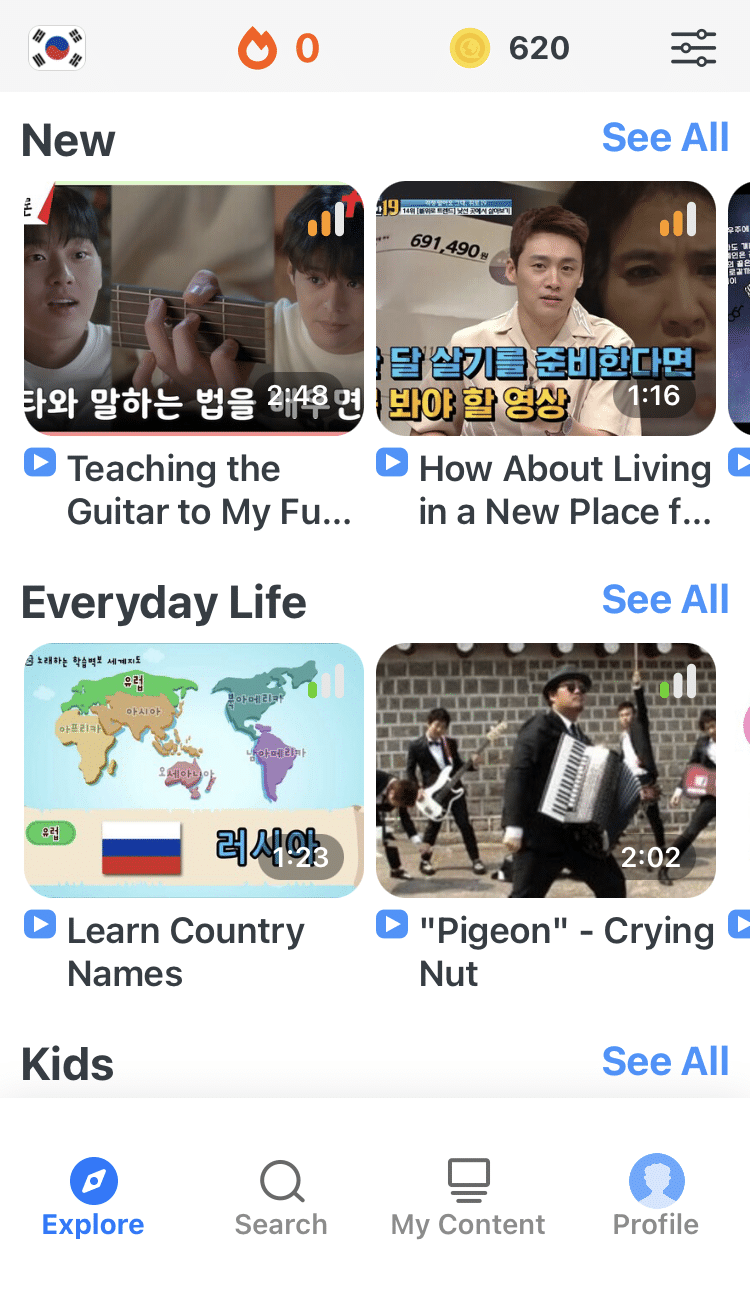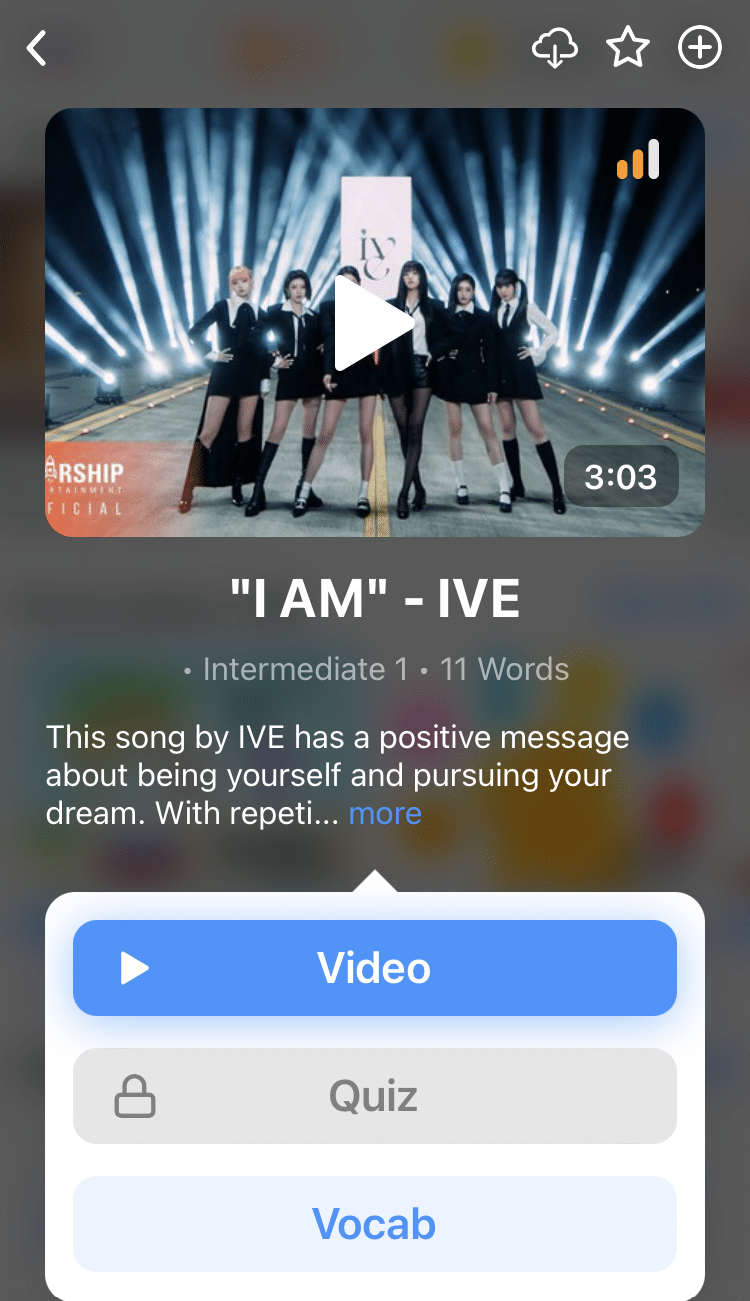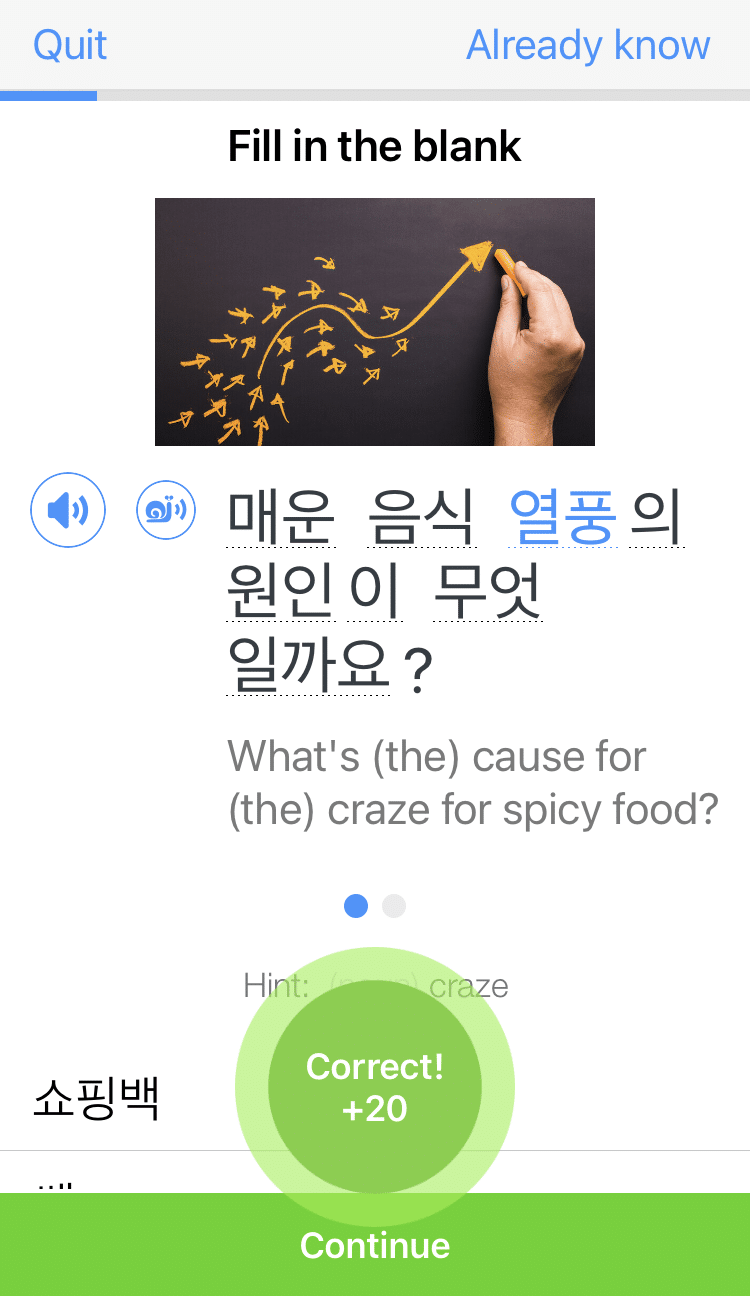
11 Korean Tongue Twisters That Will Give Your Mouth and Mind a Workout
Tongue twisters are often punctuated with hearty laughs from red-faced participants and tickled-pink observers.
They are also a handy tool for learning a language, like Korean.
In this post, I’ll teach you 11 Korean tongue twisters that will give your tongue a high-intensity workout.
So, let’s start stretching those tongues!
Contents
- 1. 간장 공장 공장장은 장 공장장이고 된장 공장 공장장은 강 공장장이다.
- 2. 경찰청 철창살은 외철창살이고 검찰청 철창살은 쌍철창살이다.
- 3. 네가 그린 기린 그림은 못 그린 기린 그림이고 내가 그린 기린 그림은 잘 그린 기린 그림이다.
- 4. 고려고 교복은 고급 교복이고 고려고 교복은 고급 원단을 사용했다.
- 5. 체다치즈를 최고 많이 먹은 최다은이 체다치즈 먹기 대회 최다 우승자이다.
- 6. 저기 있는 저분은 백 법학박사이고 여기 있는 이분은 박 법학박사이다.
- 7. 서울특별시 특허허가과 허가과장 허 과장.
- 8. 육통 통장 적금 통장은 황색 적금 통장이고 팔통 통장 적금 통장은 녹색 적금 통장이다.
- 9. 목동 로얄 뉴로얄 레스토랑 뉴메뉴 미트소시지소스스파게티 크림소시지소스스테이크.
- 10. 박범복 군은 밤 벚꽃놀이를 가고 방범복 양은 낮 벚꽃놀이를 간다.
- 11. 안 촉촉한 초코칩 나라에 살던 안 촉촉한 초코칩이 촉촉한 초코칩 나라의 촉촉한 초코칩을 보고 촉촉한 초코칩이 되고 싶어서 촉촉한 초코칩 나라에 갔는데 촉촉한 초코칩 나라의 문지기가 “넌 촉촉한 초코칩이 아니고 안 촉촉한 초코칩이니까 안 촉촉한 초코칩 나라에서 살아”라고 해서 안 촉촉한 초코칩은 촉촉한 초코칩이 되는 것을 포기하고 안 촉촉한 초코칩 나라로 돌아갔다.
- And One More Thing...
Download: This blog post is available as a convenient and portable PDF that you can take anywhere. Click here to get a copy. (Download)
1. 간장 공장 공장장은 장 공장장이고 된장 공장 공장장은 강 공장장이다.
Romanization: Gan-jang gong-jang gong-jang-jang-eun jang gong-jang-jang-i-go doen-jang gong-jang gong-jang-jang-eun gang gong-jang-jang-i-da.
Translation: The factory manager of the soy sauce factory is factory manager Jang, and the factory manager of the bean paste factory is factory manager Kang.
Vocabulary:
장 (jang) — manager
간장 (gan–jang) — soy sauce
공장 (gong–jang) — factory
된장 (doen–jang) — soy bean paste
2. 경찰청 철창살은 외철창살이고 검찰청 철창살은 쌍철창살이다.
Romanization: Gyeong-chal-cheong cheol-chang-sa-reun oe-cheol-chang-sa-ri-go geom-chal-cheong cheol-chang-sa-reun ssang-cheol-chang-sa-ri-da.
Translation: The police headquarters’ iron bar windows are single-layer iron bars, and the prosecutor’s office’s iron bar windows are double-layer iron bars.
Vocabulary:
경찰청 (gyeong–chal–cheong) — police headquarters
철창살 (cheol–chang–sal) — iron bar windows
검찰청 (geom–chal–cheong) — prosecutor’s office
3. 네가 그린 기린 그림은 못 그린 기린 그림이고 내가 그린 기린 그림은 잘 그린 기린 그림이다.
Romanization: Ne-ga geu-rin gi-rin geu-ri-meun mot geu-rin gi-rin geu-ri-mi-go nae-ga geu-rin gi-rin geu-ri-meun jal geu-rin gi-rin geu-ri-mi-da.
Translation: The drawing of a giraffe that you drew is a poorly drawn drawing of a giraffe, and the drawing of a giraffe that I drew is a well-drawn drawing of a giraffe.
Vocabulary:
그림 (geu-rim) — drawing, painting
기린 (gi-rin) — giraffe
4. 고려고 교복은 고급 교복이고 고려고 교복은 고급 원단을 사용했다.
Romanization: Goh-ryeo-goh gyo-pog-eun go-geub gyo-pog-i-go goh-ryeo-goh gyo-pog-eun go-geub won-dan-eur sa-yong-haess-da.
Translation: Gohryeo High School’s uniforms are high-quality uniforms and Gohryeo High School’s uniforms are high-quality materials.
Vocabulary:
교복 (gyo–pog) — uniform
고급 (go-geub) — high-quality
5. 체다치즈를 최고 많이 먹은 최다은이 체다치즈 먹기 대회 최다 우승자이다.
Romanization: Che-da-chi-jeu-reul choe-go ma-ni meog-eun choe-dae-un-i che-da-chi-jeu meok-gi dae-hoe choe-da u-seung-ja-i-da
Translation: Choi Da-eun who has eaten most of the cheddar cheese is the winner of the cheddar cheese eating competition.
Vocabulary:
치즈 (chi-jeu) — cheese
최고 (choe-go) — best
6. 저기 있는 저분은 백 법학박사이고 여기 있는 이분은 박 법학박사이다.
Romanization: Jeo-gi in-neun jeo-bun-eun baeg beobhagbagsaigo yeo-gi in-neun ibun-eun bag beobhagbagsaida.
Translation: That person there is Mr. Baek, a doctor of law, and this person here is Mr. Park, a doctor of law.
Vocabulary:
법학 박사 (beob-hag bag-sa) — doctor of law
7. 서울특별시 특허허가과 허가과장 허 과장.
Romanization: Seo-ul-teuk-byeol-si teu-keo-heo-ga-gwa heo-ga-gwa-jang heo-gwa-jang.
Translation: Seoul Metropolitan City’s patent granting section permission section chief, Chief Heo.
Vocabulary:
특허 (teuk–ho) — patent
허가 (heo–ga) — permission
과장 (gwa–jang) — department
8. 육통 통장 적금 통장은 황색 적금 통장이고 팔통 통장 적금 통장은 녹색 적금 통장이다.
Romanization: Yug-tong tong-chang cheog-geum-tong chang-uen hwang-saeg cheog-geum-tong-chang-i-go par-tong tong-chang cheog-geum-tong chang-uen nog-saeg cheog-geum-tong-chang-i-da.
Translation: Six dong bank book savings book is the yellow bank savings book and eight dong bank book savings book is the green bank savings book.
Vocabulary:
육 (yuk) — six
팔 (pal) — eight
황 (hwang) — yellow
녹 (nog) — green
9. 목동 로얄 뉴로얄 레스토랑 뉴메뉴 미트소시지소스스파게티 크림소시지소스스테이크.
Romanization: Mok-dong ro-yal nyu-ro-yar re-seu-to-rang nyu-me-nyu mi-teu-so-shi-chi-so-seu-seu-pa-ge-ti, keu-rim-so-shi-chi-so-seu-seu-te-i-keu.
Translation: Mokdong royal new royal restaurant new menu, meat sausage sauce spaghetti, cream sausage sauce steak.
Vocabulary:
레스토랑 (re-seu-to-rang) — restaurant
메뉴 (me-nyu) — menu
10. 박범복 군은 밤 벚꽃놀이를 가고 방범복 양은 낮 벚꽃놀이를 간다.
Romanization: Bak-beom-bok-gun-eun bam-beot-kkon-no-ri-reul ga-go bang-beom-bog-yang-eun nat-beot-kkon-no-ri-reul gan-da.
Translation: Park Beom-bok goes to the night cherry blossom viewing, and Bang Bum-bok goes to the day cherry blossom viewing.
Vocabulary:
벚꽃 (beot-kkot) — cherry blossoms
밤 (bam) — night
낮 (nat) — day
11. 안 촉촉한 초코칩 나라에 살던 안 촉촉한 초코칩이 촉촉한 초코칩 나라의 촉촉한 초코칩을 보고 촉촉한 초코칩이 되고 싶어서 촉촉한 초코칩 나라에 갔는데 촉촉한 초코칩 나라의 문지기가 “넌 촉촉한 초코칩이 아니고 안 촉촉한 초코칩이니까 안 촉촉한 초코칩 나라에서 살아”라고 해서 안 촉촉한 초코칩은 촉촉한 초코칩이 되는 것을 포기하고 안 촉촉한 초코칩 나라로 돌아갔다.
Romanization: An chok-chok-han cho-ko-chip na-ra-e sal-deon an chok-chok-han cho-ko-chip-i chok-chok-han cho-ko-chip na-ra-ui chok-chok-han cho-ko-chip-eul po-go chok-chok-han cho-ko-chip-i doe-go ship-eo-seo chok-chok-han cho-ko-chip na-ra-e ka-neun-de chok-chok-han cho-ko-chip na-ra-ui mun-ji-gi-ga “neon chok-chok-han cho-ko-chip-i a-ni-go an chok-chok-han cho-ko-chip-i-ni-kka an chok-chok-han cho-ko-chip na-ra-e-seo sal-a”ra-go-hae-seo an chok-chok-han cho-ko-chip-eun chok-chok-han cho-ko-chip-i doe-neun got-eul po-gi-ha-go an chok-chok-han cho-ko-chip na-ra-ro dol-a-gat-da.
Translation: A non-moist chocolate chip cookie that lived in non-moist chocolate chip cookie land saw a moist chocolate chip cookie from moist chocolate chip cookie land and wanted to become a moist chocolate chip cookie and so went to moist chocolate chip cookie land, but the gate-keeper of moist chocolate chip cookie land said, “You are not a moist chocolate chip cookie, but a non-moist chocolate chip cookie, so live in non-moist chocolate chip cookie land,” so the non-moist chocolate chip cookie gave up on becoming a moist chocolate chip cookie and went back to non-moist chocolate chip cookie land.
Vocabulary:
초코칩 (cho-ko-chip) — chocolate chip (cookie)
촉촉한 (chok-chok-han) — moist
You now have 11 tongue twisters to keep your tongue busy for hours on end!
They may initially look like child’s play, but in the mouth of an assiduous student, they are language learning gold!
Did you learn some new vocabulary? Want to hear it used by native Korean speakers? Consider checking out FluentU.
FluentU takes authentic videos—like music videos, movie trailers, news and inspiring talks—and turns them into personalized language learning lessons.
You can try FluentU for free for 2 weeks. Check out the website or download the iOS app or Android app.
P.S. Click here to take advantage of our current sale! (Expires at the end of this month.)
You can learn a lot of vocab with tongue twisters, but you’ll especially get to practice your Korean pronunciation.
So watch your step and keep at it!
Download: This blog post is available as a convenient and portable PDF that you can take anywhere. Click here to get a copy. (Download)
And One More Thing...
If you enjoyed this post, you're already halfway to having the time of your life learning Korean with FluentU!
FluentU makes it possible to learn with K-pop videos, funny commercials, entertaining web series and more. Just a quick look will give you an idea of the variety of FluentU videos on offer:

FluentU really takes the grunt work out of learning languages, leaving you with nothing but engaging, effective and efficient learning. It's already hand-picked the best videos for you (which are organized by level and topic), so all you have to do is simply choose any video that strikes your fancy to get started.
Each word in the interactive captions comes with a definition, audio, image, example sentences and more.

Access a complete interactive transcript of every video under the Dialogue tab, and easily review words and phrases from the video under Vocab.

You can use FluentU’s unique Quiz Mode to learn the vocabulary and phrases from the video through fun questions.

FluentU keeps track of what you're learning, and tells you exactly when it's time for review, giving you a 100% personalized experience.
Review sessions use video context to help embed the words in your memory.
Start using the FluentU website on your computer or tablet or, better yet, download the FluentU app from the iTunes or Google Play store. Click here to take advantage of our current sale! (Expires at the end of this month.)



